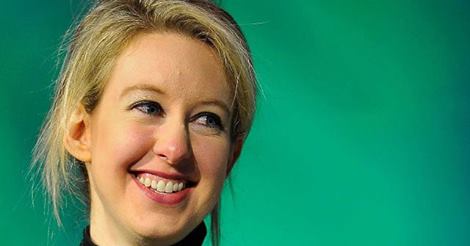Elizabeth Holmes dropped out of Stanford University at 19 with a plan to start her own company, Theranos. To fund Theranos, she dipped into the pot her parents had saved for the tuition, for she believed that her tuition money could be better used in transforming healthcare. Holmes has developed a method to draw and test a small amount of blood through a single pinprick to a finger instead of filling vials of blood from a more invasive needle stick in the arm.
Ten years later at 31, according to the Forbes 400 list she is the youngest self-made woman billionaire worth $4.6 billion, 1984 born Holmes is taking on and disrupting the $76 billion laboratory-diagnostic industry. As of 2014, Holmes has 18 US patents and 66 non-US patents in her name and is listed as a co-inventor on over a hundred patent applications. So what are the lessons we can learn from her stellar success?
Clarify The Why Of Your Life
Holmes father, Christian Holmes IV, has worked in several executive positions with USAID in humanitarian assistance. Holmes beliefs have been shaped by the misery she saw while growing up, she says, ?My father worked in disaster relief and so I grew up in a house that had pictures of all these little children in really tough parts of the world. I was absolutely convinced that was what I was going to do. Then when I started realizing that a company could be a vehicle for having very direct impact over a change that you are trying to make, I started thinking about the concept of what could I build that could impact a lot of peoples’ lives?”
Start Early
In 2002, Holmes enrolled at Stanford University to study chemistry. As a fresher she won the coveted title of “President’s Scholars, which came with a $3,000 stipend to select her own research project. She managed to convince her chemical engineering professor, Channing Robertson, to use the money for a project in his lab and work with the Ph.D. students. This was a big feat for a first year student. At the end of the spring term, she told him that she planned to spend the summer working at the Genome Institute, in Singapore. This was when she conceived the idea behind a one-prick blood test. “I think a lot of young people have incredible ideas and incredible insights, but sometimes they wait before they go give their life to something,” she said. “What I did was just to start a little earlier”, says Holmes.
You May Also Like To Read:?How to Build A Dream Team At Work
Love What You Do
Elizabeth Holmes says, ?I?ve always believed that we’re here for a reason and that the purpose of life is to make a difference in the world. I think as you get to know yourself, you find what you love, what you really enjoy, what you would be doing if you weren’t paid for it, ever .That’s what you’re looking for.”
There Is No Plan B
“I think that the minute that you have a backup plan, you’ve admitted that you’re not going to succeed”, says Holmes. If you cannot put your hear and soul behind an idea why are you even pursuing it.? On ground failure is preceded by lack of conviction, either you are in or you are not in.
Dream Big & Fail Big If So Be
For big changes, which have the potential to disrupt industries require the mindset that the risks are proportional to the change you are trying to create. Holmes says, ?You don’t do something like this without embracing failure constantly. Our approach is to take the most swings at the bat. We’ll get the most home runs, we’ll also get the most strikeouts, and we’re just not going to make the same mistake twice.”
Jappreet Sethi











Jappreet, you better know that in business world we really do have to have a contingency plan. else, to develop a secured plan that has greater chance of being successful will definitely take great amount of time and also there will be some definite waste of resources in order to get plan a work.
Just a thought.
~Tallat
Such a nice example to the kids today!